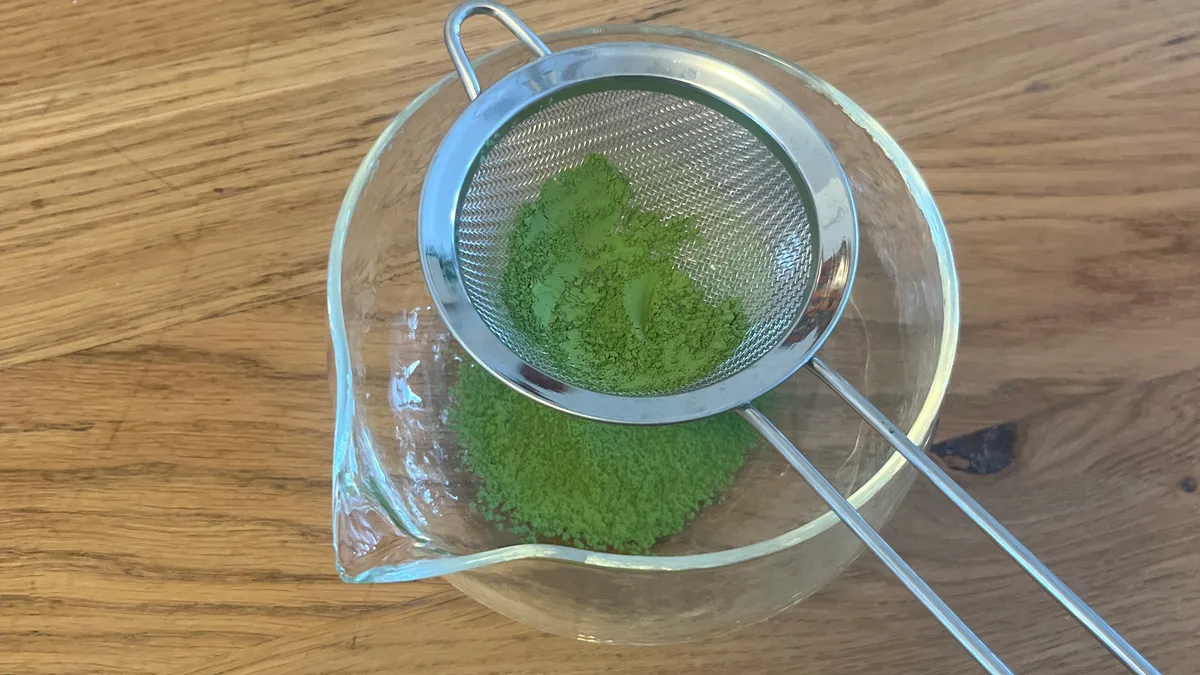Copyright CNET

Matcha, a Japanese green tea leaf that's stone-ground into a very fine powder and often used as a meditative practice, has gained international popularity. Variations of the trendy drink have made their way into cafes, restaurants and even personal kitchens, especially in the US. Traditionally, matcha is mixed with warm water, making it fairly simple to prepare. The practice dates back hundreds of years in Chinese and Japanese culture, and there are a few tricks of the trade that will help you make the perfect drink. We spoke with Japanese tea master Yoshitsugu Nagano to learn everything you need to know. We also got his views on Americanizing the drink by adding milk, sweeteners and additional mix-ins. What do you need to make matcha? The primary requirement is a high-quality matcha powder (see our testing in the link above). There are also a handful of items you'll need to enjoy matcha in your morning routine. Matcha essentials A bamboo whisk and bowl: To make matcha the traditional way, you'll want to start with a bamboo whisk, also known as a chasen, and a small bowl that fits comfortably in your hands (I use this one). "Reserve [the bowl] for matcha only," said Nagano, who hosts traditional tea rituals in New York City. "As you drink daily from the same bowl, you'll feel your body, the bowl and the tea becoming one." You will also want to make sure you don't use a bowl made from a material that emits too much heat, such as metal or porcelain. A sifter and an electric kettle: You'll also need a sifter and an electric kettle. You can use a stovetop kettle instead if you already have one on hand, but we recommend an electric kettle so that you can control the water temperature, which is crucial when making matcha (more on this below). There are also full matcha kits available for those who prefer to purchase everything together. What you need for a matcha latte A milk frother: If you want to make lattes, a milk frother will be your friend. You can also use a handheld milk frother to whisk your matcha if you don't plan on purchasing a bamboo whisk. A sweetener and milk: You can also add any sweeteners or milks you'd like to use. Some popular options are simple syrup, honey and agave. How to make matcha traditionally Nagano said that although "there isn't a single right or wrong way to whisk matcha," there are certain steps you can take to enhance "its meditative effect." As you may have already assumed, the best time to make matcha is typically in the mornings. "Historically, matcha rituals developed as samurai meditation, and records show many samurai hosted early-morning tea gatherings," Nagano said. "Since matcha contains caffeine, it's well-suited to starting the day." Before beginning the tea ritual, you'll want to find an area in your home where you feel calm or "any place that lets you step a little outside daily life," Nagano said. Align your posture and take deep breaths to help you relax. Then you can begin. Step 1: Prepare your bowl and whisk Pour a small amount of warm water from your kettle into the bowl and soak your whisk for about 30 seconds. Soaking your whisk will help soften it and prevent it from breaking. When you're done, discard that water and dry your bowl. Step 2: Sift your matcha Sift half a teaspoon of matcha powder into your bowl and add about four tablespoons of water to the bowl "Add water along the side of the bowl rather than pouring directly onto the powder to avoid splashing and clumping," Nagano said. For matcha, your water should be right around 80 degrees Celsius (176 degrees Fahrenheit). Any temperature above 70 degrees Celsius (158 degrees Fahrenheit) could cause your matcha to become bitter or diminish the foam. "Foam matters because it greatly affects flavor perception," Nagano said. "Drinks with foam -- champagne, beer, lattes and matcha -- release aromatic compounds when bubbles burst in the mouth." Step 3: Whisk the matcha and water together The correct way to hold your whisk is with your thumb, index and middle fingers in an upright position. "Move in straight lines and be sure your path passes through the center of the bowl," Nagano said. "This creates complex currents whose collisions generate fine foam. Avoid tracing the bowl's inner wall in circles; that method won't produce satisfying foam." Aim to go back and forth with your wrist about 50 times. Step 4: Remove the whisk and enjoy After the powder is fully dissolved and you have a thick, deep green liquid, it's ready. "Before drinking, settle your posture and your breathing and clear your mind," Nagano said. "Lift the bowl gently with both hands and bow in gratitude and respect to the matcha and to nature. Then sip slowly." As you slowly drink your matcha, pay attention to the warmth of the drink as it goes through your body, and your attention will turn "inward to body and mind," he said. Is it OK to add milk to matcha to make lattes? If you want to make matcha lattes instead of drinking it in the traditional sense, you can add extra ingredients. Nagano supports drinking it however you please. Although he practices the traditional matcha ritual detailed above, he believes the "classics and modern styles elevate each other's existence and value." Nagano explained that matcha originated in China during the Northern Song Dynasty about 1,000 years ago. It then arrived in Japan roughly 800 years ago, where it quickly gained popularity. "The United States today is in a similar moment to Japan's first encounter 800 years ago," he said. "It's conceivable that over the next few centuries, a uniquely American style of matcha ritual will take shape." After all, matcha isn't the first item to spread internationally and develop in different ways. Nagano compared the continual reinvention of the historic drink to the California roll, which was invented post World War II, after sushi was introduced to the US. Later, traditional sushi styles also gained popularity. Nagano calls this "a superb example of creativity and tradition connecting without contradiction." Today, you'll see matcha lattes served over ice, with flavors like strawberry and mango added in. Matcha desserts, such as my newfound favorite cookies, are also gaining popularity, and matcha cocktails are emerging on the scene. Nagano sees the ongoing diversification of the tea-based drink as positive. "It's wonderful when different cultures meet and something new emerges," he said.



